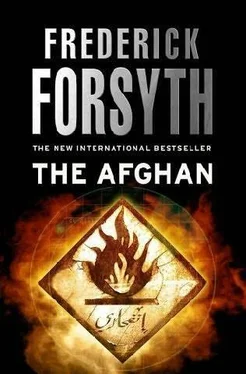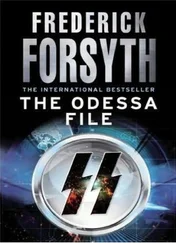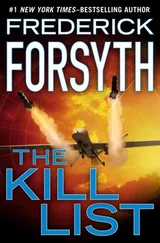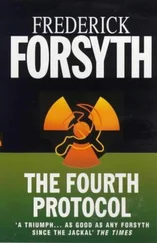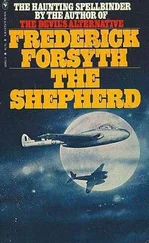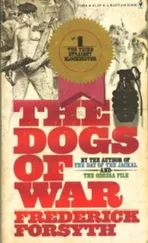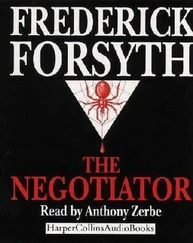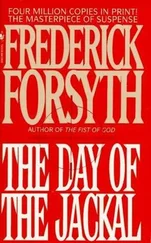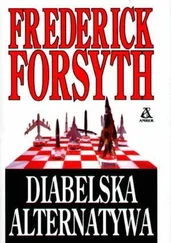Tamian Godfrey and Najib Qureshi concentrated on the daily prayers. Martin would have to say them in front of others, and he had better get them right. There was one ray of hope, according to Najib. He was not a born Arab; the Koran was only in classical Arabic and no other language. A one-word slip could be put down to mispronunciation. But for a boy who had spent seven years in a madrassah, one entire phrase was too much. So with Najib rising and bowing, forehead to the carpet, beside him, and Tamian Godfrey, due to her stiff knees, in a chair, they recited and recited and recited.
***
There was progress also at Edzell air base where an Anglo-American technical team was installing and linking all the British intelligence services and those of the USA into one nexus. The accommodation and facilities were up and running. When the U.S. Navy was in residence, the base had had, apart from housing and workstations, a bowling alley, beauty salon, delicatessen, post office, basketball court, gym and theater. Gordon Phillips, aware of his budget, and with Steve Hill breathing down his neck, left the fripperies much as they were-defunct.
The RAF shipped in catering staff, and the RAF regiment took over perimeter security. No one doubted the base was becoming a listening post for opium traffickers.
From the USA, giant Galaxies and Starlifters flew in with listening monitors that could and would scan the world. Arabic translations were not imported, because this would be handled by GCHQ_ Cheltenham and Fort Meade, both of whom would be in constant secure contact with Crowbar, as the new listening post had been coded.
Before Christmas, the twelve computer workstations were established and brought onstream. These would be the nerve center, and six operators would hover over them day and night.
Crowbar Center was never devised as a new intelligence agency of its own, but simply a short-term, “dedicated”-that is, single-purpose-operation, with whom all British and U.S. agencies would, thanks to John Negroponte’s blanket authority, cooperate without stint or delay.
To assist in this effort. Crowbar’s computers were fitted with ultrasecure ISDN BRENT lines, with two BRENT keys for each station. Each had its own removable hard drive that would be taken out when not in use and stored in a guarded safe. Crowbar’s computers were then linked directly into the communications systems of the head office, or HO, the term for SIS headquarters at Vauxhall Cross, and Grosvenor, the term employed for the CIA station at the U.S. Embassy in Grosvenor Square, London.
To seal the operation from any unwanted interference, the Crowbar address for its communications was hidden under a STRAP3 access code, with a bigot list limiting those in the know to a very few senior officers indeed. Then Crowbar began to listen to every word spoken in the Middle East, in the Arabic language and in the world of Islam. It was only doing what was already being done by others, but the pretense had to be maintained. When Crowbar went operational, it had one other access. Apart from sound, it was interested in vision. Also piped into the obscure Scottish air base were the images the National Reconnaissance Office was picking up from its KH-n “Keyhole” satellites over the Arab world, and the yield of the increasingly popular Predator drones, whose high-definition images from twenty thousand feet went back to the American Army Central Command, or CENT-COM, headquarters at Tampa, Florida.
Some of the more penetrating minds at Edzell realized that Crowbar was ready and waiting for something, but they were not quite sure what.
***
SHORTLY BEFORE Christmas 2006, Mr. Alex Siebart recontacted Mr. Lampong at his Indonesian company office to propose one of the two general cargo freighters registered in Liverpool as suitable for his purpose. By chance, both were owned by the same small shipping company, and Siebart and Abercrombie had chartered them before on behalf of clients who had been amply satisfied. McKendrick Shipping was a family business; it had been in the merchant marine for a century. The company chief was also the family patriarch, Liam McKendrick. who captained the Countess of Richmond, and his son, Sean, captained the other. The Countess of Richmond was eight thousand tons, flew the Red Ensign, was moderately priced and would be available for a fresh cargo out of a British port by March 1.
What Alex Siebart did not add was that he had warmly recommended the contract to Liam McKendrick if it came their way, and the old skipper had concurred. If Siebart and Abercrombie could find him a cargo from the USA back to the UK, it would make a very nice and profitable triangular voyage for the spring. Unbeknownst to either man, Mr. Lampong contacted someone in the British city of Birmingham, an academic at Aston University, who drove himself to Liverpool. With high-powered binoculars, the Countess of Richmond was examined in detail, and a long-range lens took over a hundred pictures of her from different angles. A week later, Mr. Lampong e-mailed back. He apologized for the delay, explaining that he had been up-country examining his sawmills, but that the Countess of Richmond sounded exactly right. His friends in Singapore would be in touch with details of the cargo of limousines to be brought from the UK to the Far East. In truth, the friends in Singapore were not Chinese but Malaysians; and not simply Muslims but ultrafanatical Islamists. They had been put in funds out of a new account created in Bermuda by the late Mr. Tewfik al-Qur, who had deposited the original monies, before transfer with a small private bank in Vienna that suspected nothing. They did not even intend to make a loss on the limousines, but to recoup their investment by selling them once their purpose had been served.
***
Marek Gumienny’s explanation to the CIA interrogators that Izmat Khan might be coming up for trial was not untrue. He intended to arrange exactly that, and to secure an acquittal and release.
In 2005, a U.S. Appeals Court had decreed that the rights of prisoners of war did not apply to members of Al Qaeda. The Federal Court had upheld President Bush’s intention to order the trials of terrorist suspects by special military tribunals. That, for the first time in four years, gave the detainees the chance of a defense attorney. Gu-mienny intended that Izmat Khan’s defense would be that he had never been in Al Qaeda, but a serving Afghan Army officer, albeit under the Taliban, and had nothing whatever to do with 9/11 or Islamist terrorism. And he intended that the court should accept that. It would require John Negroponte, as director of National Intelligence, to request his colleague Donald Rumsfeld, as secretary of defense, to “have a word” with the military judges of the case.
Mike Martin’s leg was healing nicely. He had noted when he read Izmat Khan’s slim file after the concordat in the orchard that the man had never described how he had acquired the scar on the right thigh. Martin saw no reason to mention it either. But when Michael McDonald arrived back from Langley with the more copious notes over Izmat Khan’s numerous interrogations, he had been concerned that the questioners had pressed the Afghan for an explanation of the scar and never received one. If the existence of the scar was by any chance known to anyone inside Al Qaeda and Mike Martin bore no such scar, his cover would be “blown.”
Martin had no objection, for he had something in mind. A surgeon was flown from London to Edzell, and then by the newly acquired Bell JetRanger helicopter to the lawn of Forbes Castle. He was the Harley Street surgeon with full security clearance who could be relied on to remove the occasional bullet and say nothing more about it.
It was all done with a local anesthetic. The incision was easy, for there was no bullet or fragment to be extracted. The problem was, make it heal in a few weeks but look much older than that.
Читать дальше
